Photo: Matt Winkelmeyer/Getty Images for Spotify
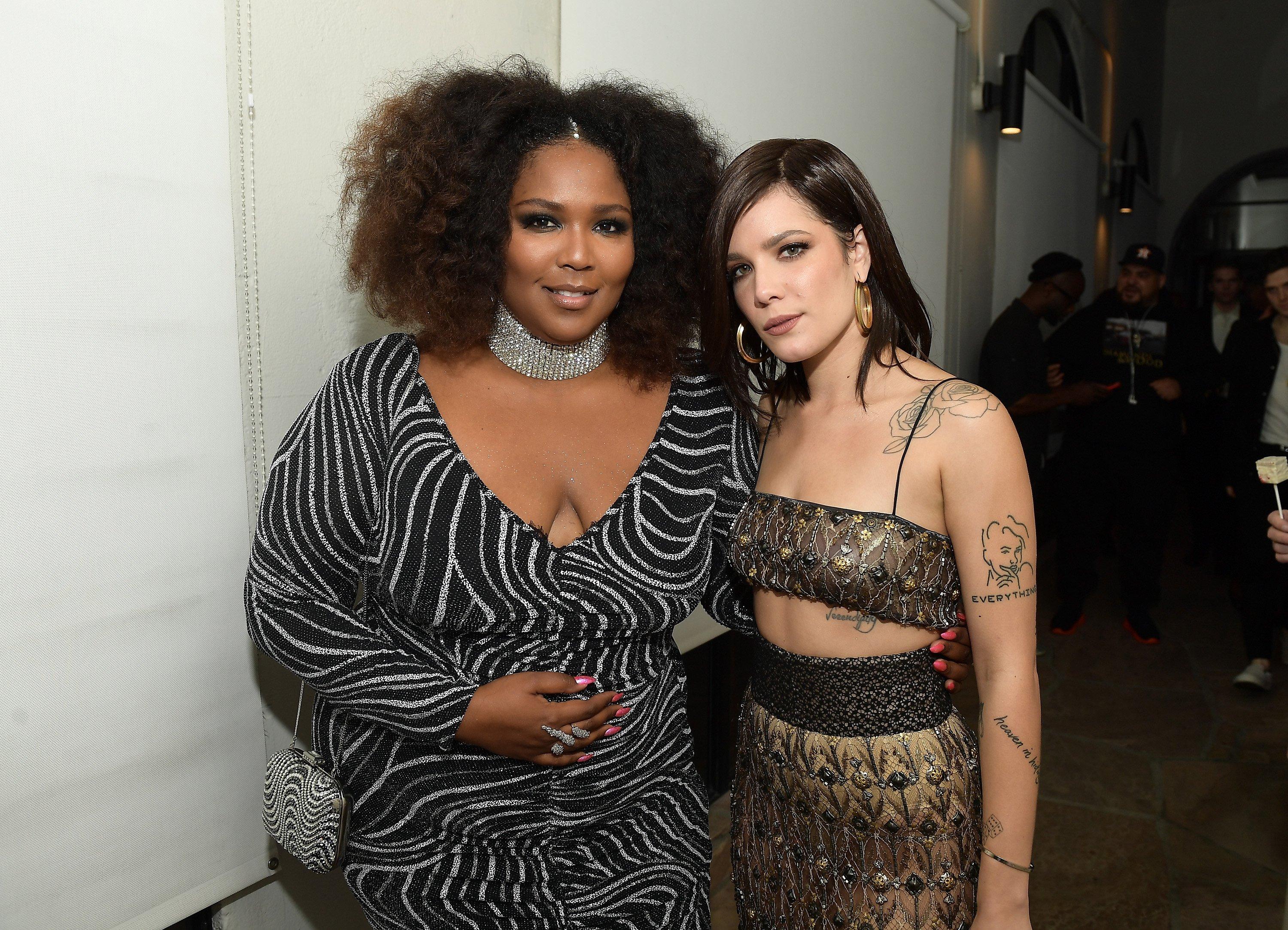
Lizzo & Halsey
news
Lizzo, Halsey, Shawn Mendes & More To Talk Mental Health On Upcoming Radio Special
Tegan and Sara, Blink-182, Judah & the Lion and Lauren Jauregui will also take part in "I'm Listening," a two-hour radio show focused on breaking stigmas around openly discussing mental health
This Sunday, Sept. 8, Lizzo, Halsey, Shawn Mendes, Tegan and Sara and others will take part in "I'm Listening," a two-hour radio special focused on breaking stigmas around openly discussing mental health. Blink-182, Disturbed, Korn, Judah & the Lion and Lauren Jauregui are among the diverse group of musicians, athletes and medical professionals/mental health advocates joining the conversation hosted by Entercom/Radio.com. The annual broadcast will once again mark the start of National Suicide Prevention Week.
All the artists participating have been open about their own struggles with mental health. Earlier this summer, self-love advocate Lizzo posted on social media about the depression she was facing, following up the next day with a powerful message to her fans.
She wrote, "I learned in the last 24hrs that being emotionally honest can save your life. Reaching out may be hard but as soon as I did it, I was immediately covered in love. I used to think of sadness as a constant with fleeting moments of joy in between…but it's a wave… My sadness can be as temporary as my joy."
She added a personal note about her own triggers, prompting readers to question what brings up sadness for them. "I love that I can use my sadness constructively in real time for gratitude. What triggers your sadness? What do you do when those buttons are pushed? What do you love about yourself in those moments of darkness?"
Sara Quin of Tegan and Sara spoke to mental health challenges of the LGBTQ+ community as they continue to fight for equality. "I think issues around identity and mental health are intrinsically linked," she said in a statement for "I'm Listening."
"It makes sense to me now, that if I don't talk about my feelings, I'm not going to feel well, I'm not going to be well," Quin added. "Through the work that we do with the Tegan and Sara Foundation, and some of the staggering statistics surrounding queer people and mental health, we hope that by talking about some of our experiences as young people, that it will encourage others to do the same."
Lauv On "F**k, I'm Lonely," Staying Independent, Mental Health & More
Entercom's Chief Programming Officer Pat Paxton echoed the importance of the conversation—and talking about mental health in general—in the statement. "We are doing our part to end the stigma by encouraging people to talk. Like millions of others, my family has been impacted by mental health issues and the effect it has on friends and families is devastating. 'I'm Listening' is when our vast network of radio stations and digital platforms unite on the same day, at the same time, to ultimately save lives. If we help just one person, our time will have been well spent."
In addition to being able to tune into the program, which will be aired on all Entercom radio stations at 7 a.m. local time this Sunday, everyone is encouraged to join the conversation by tweeting to @imlistening_org, using the hashtag #ImListening or submitting your story on their website. Radio.com writes, "Select stories will included in the show." Listeners can also call in live to participate or listen to the special episode online after it airs.
If you are or know of a musician in need of mental health support, please visit MusiCares to learn more about your options. If you or a loved one are in crisis, the National Suicide Prevention Lifeline at 1-800-273-TALK (8255) or the Crisis Text Line (text TALK to 741741) are there to listen; you are not alone.
Judah & The Lion On Choosing Hope In Tough Times: "Just Talk About It, And You'll Feel Less Alone"
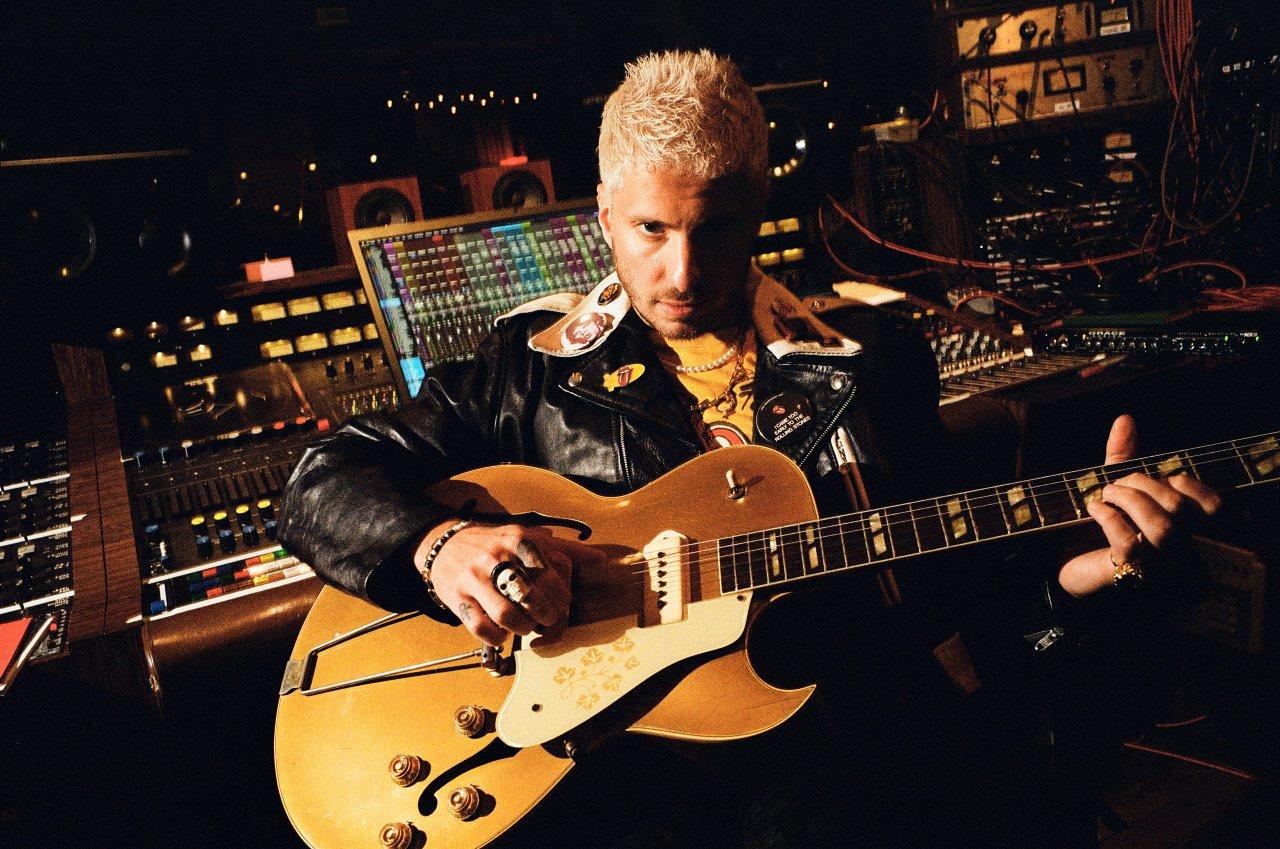
Photo: Adali Schell
list
How Andrew Watt Became Rock's Big Producer: His Work With Paul McCartney, Ozzy Osbourne, Pearl Jam, & More
Andrew Watt cut his teeth with pop phenoms, but lately, the 2021 Producer Of The Year winner has been in demand among rockers — from the Rolling Stones and Blink-182 to Elton John.
While in a studio, Andrew Watt bounces off the walls. Just ask Mick Jagger, who once had to gently tell the 33-year-old, "Look, I can deal with this, but when you meet Ronnie and Keith, you have to dial it down a little bit."
Or ask Pearl Jam's Stone Gossard. "He really got the best out of [drummer] Matt [Cameron] just by being excited — literally jumping up and down and pumping his fist and running around," he tells GRAMMY.com.
As Watt's hot streak has burned on, reams have rightly been written about his ability to take a legacy act, reconnect them with their essence, and put a battery in their back. His efficacy can be seen at Music's Biggest Night: Ozzy Osbourne's Patient Number 9 won Best Rock Album at the 2023 GRAMMYs. At the last ceremony, the Rolling Stones were nominated for Best Rock Song, for Hackney Diamonds' opener "Angry."
On Pearl Jam's return to form, Dark Matter, due out April 19. Who was behind the desk? Take a wild guess.
"You want to see them live more than you want to listen to their albums, and they have the ability to look at each other and play and follow each other. I don't like my rock music any other way, as a listener," Watt tells GRAMMY.com. "All my favorite records are made like that — of people speeding up, slowing down, playing longer than they should."
As such, Watt had a lightbulb moment: to not record any demos, and have them write together in the room. "They're all playing different stuff, and it makes up what Pearl Jam is, and singer Eddie [Vedder] rides it like a wave."
If you're more of a pop listener, there's tons of Watt for you — he's worked with Justin Bieber ("Hit the Ground" from Purpose), Lana Del Rey ("Doin' Time" from Norman F—ing Rockwell) and much more. Read on for a breakdown of big name rockers who have worked with Andrew Watt.
Pearl Jam / Eddie Vedder
Watt didn't just produce Dark Matter; he also helmed Vedder's well-received third solo album, Earthling, from 2022. Watt plays guitar in Vedder's live backing band, known as the Earthlings — which also includes Josh Klinghoffer, who replaced John Frusciante in the Red Hot Chili Peppers for a stint.
The Rolling Stones
Dark Matter was a comeback for Pearl Jam, but Hackney Diamonds was really a comeback for the Stones. While it had a hater or two, the overwhelming consensus was that it was the Stones' best album in decades — maybe even since 1978's Some Girls.
"I hope what makes it fresh and modern comes down to the way it's mixed, with focus on low end and making sure the drums are big," Watt, who wore a different Stones shirt every day in the studio, has said about Hackney Diamonds. "But the record is recorded like a Stones album."
Where there are modern rock flourishes on Hackney Diamonds, "There's no click tracks. There's no gridding. There's no computer editing," he continued. "This s— is performed live and it speeds up and slows down. It's made to the f—ing heartbeat connection of Mick Jagger, Keith Richards, Ronnie Wood and Steve Jordan.
"And Charlie," Watt added, tipping a hat to Watts, who played on Hackney Diamonds but died before it came out. "When Charlie's on it."
Iggy Pop
Ever since he first picked up a mic and removed his shirt, the snapping junkyard dog of the Stooges has stayed relevant — as far as indie, alternative and punk music has been concerned.
But aside from bright spots like 2016's Josh Homme-produced Post Pop Depression, his late-career output has felt occasionally indulgent and enervated. The 11 songs on 2023's eclectic Watt-produced Every Loser, on the other hand, slap you in the face in 11 different ways.
"We would jam and make tracks and send them to Iggy, and he would like 'em and write to them or wouldn't like them and we'd do something else," Watt told Billboard. "It was very low pressure. We just kept making music until we felt like we had an album." (And as with Pearl Jam and Vedder's Earthlings band, Watt has rocked out onstage with Pop.
Ozzy Osbourne
You dropped your crown, O Prince of Darkness. When he hooked up with Watt, the original Black Sabbath frontman hadn't released any solo music since 2010's Scream; in 2017, Sabbath finally said goodbye after 49 years and 10 (!) singers.
On 2020's Ordinary Man and 2022's Patient Number 9, Watt reenergized Ozzy; even when he sounds his age, Ozz sounds resolute, defiant, spitting in the face of the Reaper. (A bittersweet aside: the late Taylor Hawkins appears on Patient Number 9, which was written and recorded in just four days.)
Maroon 5
Yeah, yeah, they're more of a pop-rock band, but they have guitars, bass and drums. (And if you're the type of rock fan who's neutral or hostile to the 5, you shouldn't be; Songs About Jane slaps.)
At any rate, Watt co-produced "Can't Leave You Alone," featuring Juice WRLD, from 2021's Jordi. Critics disparaged the album, but showed Watt's facility straddling the pop and rock worlds.
5 Seconds of Summer
When it comes to Andrew Watt, the Sydney pop-rockers — slightly more on the rock end than Maroon 5 and their ilk — are repeat customers. He produced a number of tracks for 5 Seconds of Summer, which spanned 2018's Youngblood, 2020's Calm and 2022's 5SOS5.
Regarding the former: Watt has cited Youngblood as one of the defining recording experiences of his life.
"I had started working with 5 Seconds of Summer, and a lot of people looked at them as a boy band, but they're not," Watt told Guitar Player. "They're all incredible musicians. They can all play every instrument. They love rock music. They can harmonize like skyrockets in flight. They just were making the wrong kind of music."
So Watt showed 5 Seconds of Summer a number of mainstays of the rock era, like Tears for Fears and the Police. The rest, as they say, is history.
Elton John
A year after Britney Spears was unshackled from her highly controversial conservatorship, it was time for a victory lap with the God of Glitter. What resulted was a curious little bauble, which became a megahit: "Hold Me Closer," a spin on "Tiny Dancer," "The One" and "Don't Go Breaking My Heart" that briefly launched Spears back into the stratosphere.
"Britney came in and she knew what she wanted to do," Watt recalled to The L.A. Times. "We sped up the song a little bit and she sang the verses in her falsetto, which harkens back to 'Toxic.' She was having a blast."
Blink-182
Watt has also worked with pop/punk heroes Blink-182 — but not after Tom DeLonge made his grand return. He produced "I Really Wish I Hated You" from 2019's Nine, back when Matt Skiba was in the band.
Where in the rock world will this tender-aged superproducer strike next? Watt knows.
Songbook: The Rolling Stones' Seven-Decade Journey To Hackney Diamonds
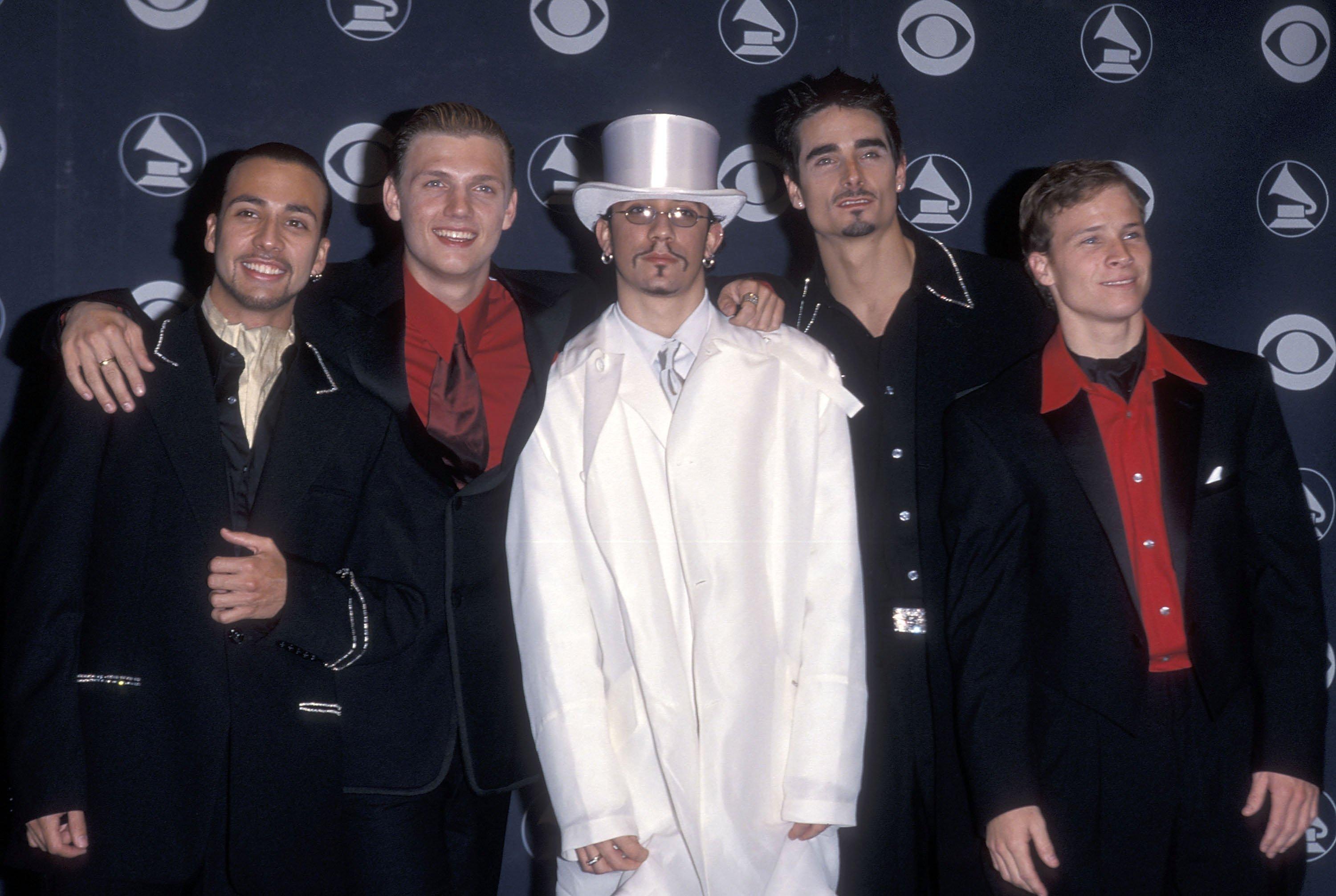
Photo: Ron Galella, Ltd./Ron Galella Collection via Getty Images
list
25 Years Of Backstreet Boys' "I Want It That Way": 10 Covers By Ed Sheeran, Lil Uzi Vert & More
To commemorate the anniversary of Backstreet Boys' biggest hit, take a look at 10 clever ways it's been covered and sampled — from Ed Sheeran's karaoke bit to a Weird Al special.
When the Backstreet Boys released "I Want It That Way" on April 12, 1999, they likely had no idea how beloved their smash hit would still be a quarter-century later.
Written by the Swedish powerhouse team of Andreas Carlsson and Max Martin, "I Want It That Way" is undoubtedly BSB's signature hit, particularly thanks to its memorable undulating melody and its long-debated cryptic meaning. But perhaps the most surprising part of the song's legacy is how it has resonated across genres — from a TikTok cover by Korn to a hip-hop sampling by Lil Uzi Vert.
As the Backstreet Boys celebrate the 25th anniversary of "I Want It That Way," take a look at how the song has been diversely covered, lovingly lampooned and karaoke jammed by an array of voices in the business.
Weird Al Yankovic (2003)
When the king of parody songs selects one to skewer, you know it's an iconic song. Weird Al Yankovic paid tribute to the largeness of the Backstreet Boys classic when he used "I Want It That Way" as the basis of a song called "eBay" in 2003.
Yankovic's chorus replaces the original's with, "A used pink bathrobe/ A rare mint snow globe/ A Smurf TV tray/ I bought on eBay." The Backstreet Boys send up appears on Yankovic's album Poodle Hat, which won Best Comedy Album at the 2004 GRAMMYs.
One Direction (2013)
Three years One Direction formed on "The X Factor," the five lads — Harry Styles, Zayn Malik, Niall Horan, Liam Payne and Louis Tomlinson — included a cover of "I Want It That Way" on their 2013 concert set lists, the young boy band paying homage to the ones that came before them. Though their English accents poked through at times, their version was loyal to the original, and got their crowds singing along.
"Glee" (2013)
Poking fun at the presumed rivalry between *NSYNC and Backstreet Boys, a medley of the former's "Bye Bye Bye" and "I Want It That Way" was featured in Season 4, Episode 16 of "Glee." In the episode — aptly titled "Feud" — choir director Mr. Schuester (Matthew Morrison) and glee club heartthrob Finn (Cory Monteith) face off in an epic boy band battle, which ultimately proved the groups' respective music was more cohesive than divisive.
Brittany Howard and Jim James (2016)
The lead singers of Alabama Shakes and My Morning Jacket covering a boy band classic. It doesn't sound real, but Brittany Howard and Jim James did just that in 2016 when they recorded "I Want It That Way" for an animated short cartoon called "A Love Story."
Released by the fast food chain Chipotle Mexican Grill, the clip was part of a creative campaign to showcase the company's focus on natural ingredients. Howard and James highlight the poignancy and versatility of the song by adding lush string arrangements and dramatic beats.
Backstreet Boys x Jimmy Fallon and The Roots (2018)
The 2018 live performance of "I Want It That Way" by the Backstreet Boys, Jimmy Fallon and The Roots for "The Tonight Show" is arguably the sweetest rendition of the song — and not just because they're using a mini xylophone, baby tambourine and other toy classroom instruments. It's even more endearing than the previous collaborations between Fallon and Backstreet Boys: a barbershop singing version of Sisqo's "Thong Song" and a "Bawkstreet Boys" version of "Everybody (Backstreet's Back)," with everyone dressed like fluffy birds.
The 1975 (2020)
British rockers The 1975 performed a fairly faithful cover of "I Want It That Way," hitting all the high notes at several of their 2023 world concert tour stops. But it's not the first time frontman Matty Healy has hinted at the Backstreet Boys' influence on his band: he told Pitchfork in 2020 that "College Dropout-era Kanye West meets Backstreet Boys" was part of their veritable moodboard at the time when working on their own song called "Tonight (I Wish I Was Your Boy)."
Lil Uzi Vert (2020)
In 2020, Lil Uzi Vert released a rap song called "That Way" that includes a refrain of "I want it that way" sung to the tune of the Backstreet original, but with an AutoTune twist. From there, the lyrics become quite a bit naughtier than anything the BSB guys have uttered in any song.
"I don't know how [the idea of] Backstreet Boys got involved in this song, I really don't," the song's producer Supah Mario told Splice at the time. "I think it was all Uzi. But it was a game changer."
The interpolation was so good, in fact, that Nick Carter even invited Lil Uzi Vert to collaborate: "Now you're gonna have to be featured on our next album bud," he tweeted upon the song's release.
Korn (2022)
Fans of Korn know that the nu metal band has a sense of humor, but few could've expected that Jonathan Davis and crew would post a TikTok of themselves singing "I Want It That Way" in 2022.
"I never wanna hear you say… 'Worst Is On Its Way,'" reads the caption on the post, a tongue-in-cheek reference to Korn's 2022 song of the same name.
Backstreet Boys responded on the app via a hilarious Duet video with Nick Carter. In the video, Carter — who sports fabulous metal eye makeup and a long silver wig — doesn't actually say or sing anything, he just drops his jaw in amazement.
Backstreet Boys x Downy (2022)
Downy hired the Backstreet Boys to poke fun at "I Want It That Way" with the now-viral "Tell Me Why" commercial in 2022. All five members — Nick Carter, Howie Dorough, Brian Littrell, AJ McLean and Kevin Richardson — appear as a Backstreet Boys poster on the wall that comes to life, using the "tell me why" hook of their hit to engage a woman doing laundry in a conversation about washing her clothes.
As Saatchi group account director Jen Brotman told Muse at the time, the nostalgic ad also spawned some memories for the folks working on the ad campaign.
"The moment [BSB] stood in front of the camera, they rehearsed 'I Want It That Way' just to get the notes right, and we felt like we were getting serenaded on set," Brotman recalled. "We couldn't believe how emotional we all got — there may or may not have been tears in some eyes. The song has always been a karaoke favorite of the team, so we knew which 'tell me whys' we wanted them to hit, and we still can't get it out of our heads."
Ed Sheeran (2023)
When he fancies singing a bit of karaoke, Ed Sheeran loves leaning on "I Want It That Way," as the star showed at his favorite Nashville bar in July 2023. A patron caught him on camera and his happiness level is undeniable when belting out this enduring pop classic.
As Sheeran told CBS News a few months later, he grew up on the pop hits of everyone from Backstreet Boys to Britney Spears. But what he said about "I Want It That Way" specifically may be the best way to describe its long-lasting impact: "You can't be in a bar, a couple of beers in, and 'I Want It That Way' comes on and not be like, 'This is a good song.' You can't."
24 Songs Turning 20: Listen To 2004's Bangers, From "Yeah!" To "Since U Been Gone"
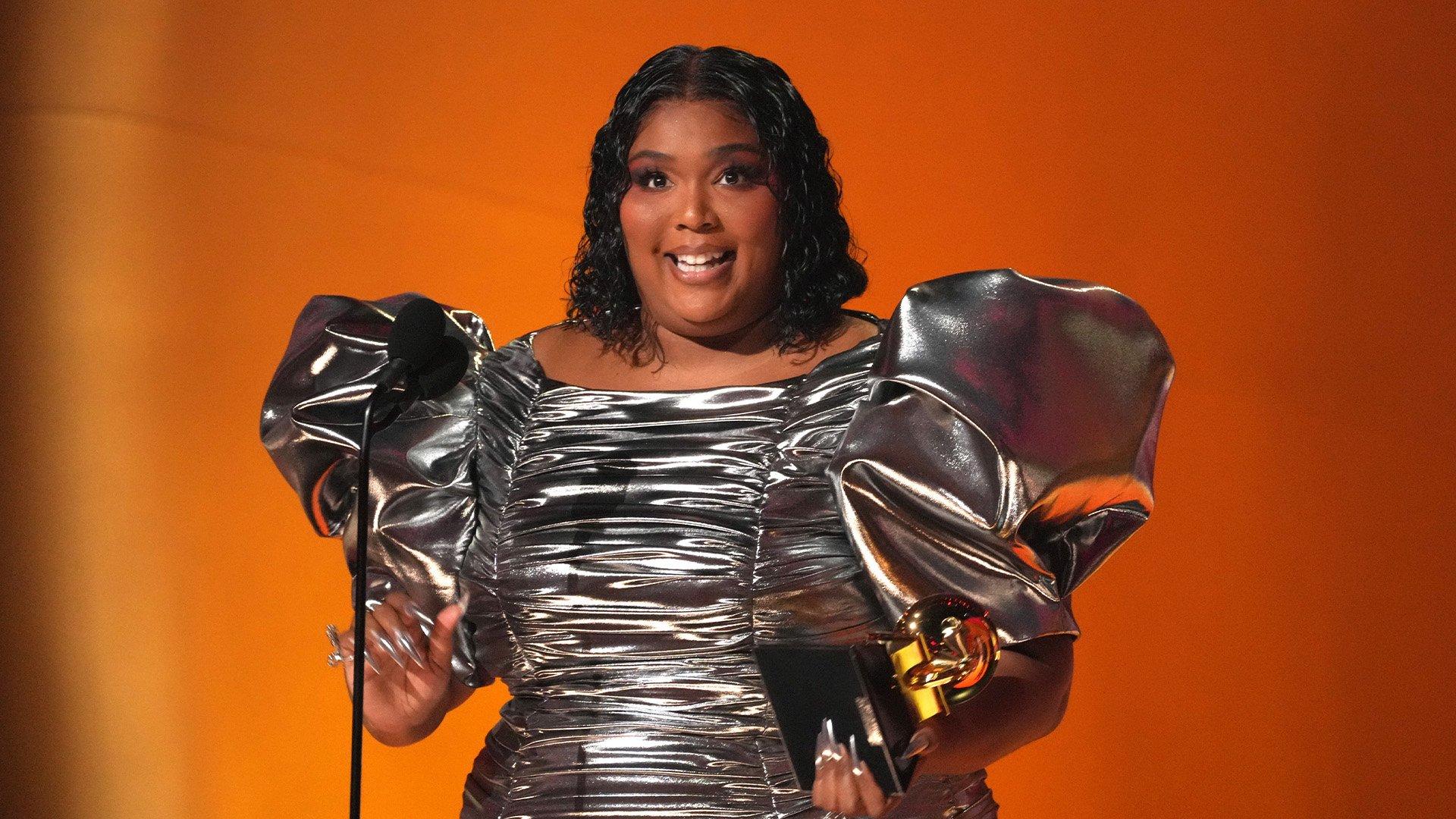
Photo: Kevin Mazur/Getty Images for The Recording Academy
video
GRAMMY Rewind: Lizzo Thanks Prince For His Influence After "About Damn Time" Wins Record Of The Year In 2023
Watch Lizzo describe how Prince’s empowering sound led her to “dedicate my life to positive music” during her Record Of The Year acceptance speech for “About Damn Time” at the 2023 GRAMMYs.
Since the start of her career, four-time GRAMMY winner Lizzo has been making music that radiates positive energy. Her Record Of The Year win for "About Damn Time" at the 2023 GRAMMYs proved that being true to yourself and kind to one another always wins.
Travel back to revisit the moment Lizzo won her award in the coveted category in this episode of GRAMMY Rewind.
"Um, huh?" Lizzo exclaimed at the start of her acceptance speech. "Let me tell you something. Me and Adele are having a good time, just enjoying ourselves and rooting for our friends. So, this is an amazing night. This is so unexpected."
Lizzo kicked off her GRAMMY acceptance speech by acknowledging Prince's influence on her sound. "When we lost Prince, I decided to dedicate my life to making positive music," she said. "This was at a time when positive music and feel-good music wasn't mainstream at that point and I felt very misunderstood. I felt on the outside looking in. But I stayed true to myself because I wanted to make the world a better place so I had to be that change."
As tracks like "Good as Hell" and "Truth Hurts" scaled the charts, she noticed more body positivity and self-love anthems from other artists. "I'm just so proud to be a part of it," she cheered.
Most importantly, Lizzo credited staying true to herself despite the pushback for her win. "I promise that you will attract people in your life who believe in you and support you," she said in front of a tearful audience that included Beyoncé and Taylor Swift in standing ovation, before giving a shout-out to her team, family, partner and producers on the record, Blake Slatkin and Ricky Reed.
Watch the video above for Lizzo's complete acceptance speech for Record Of The Year at the 2023 GRAMMYs. Check back to GRAMMY.com for more new episodes of GRAMMY Rewind, and be sure to tune into the 2024 GRAMMYs on Sunday, Feb. 4, airing live on the CBS Television Network (8-11:30 p.m. LIVE ET/5-8:30 p.m. LIVE PT) and streaming on Paramount+ (live and on-demand for Paramount+ with SHOWTIME subscribers, or on-demand for Paramount+ Essential subscribers the day after the special airs).
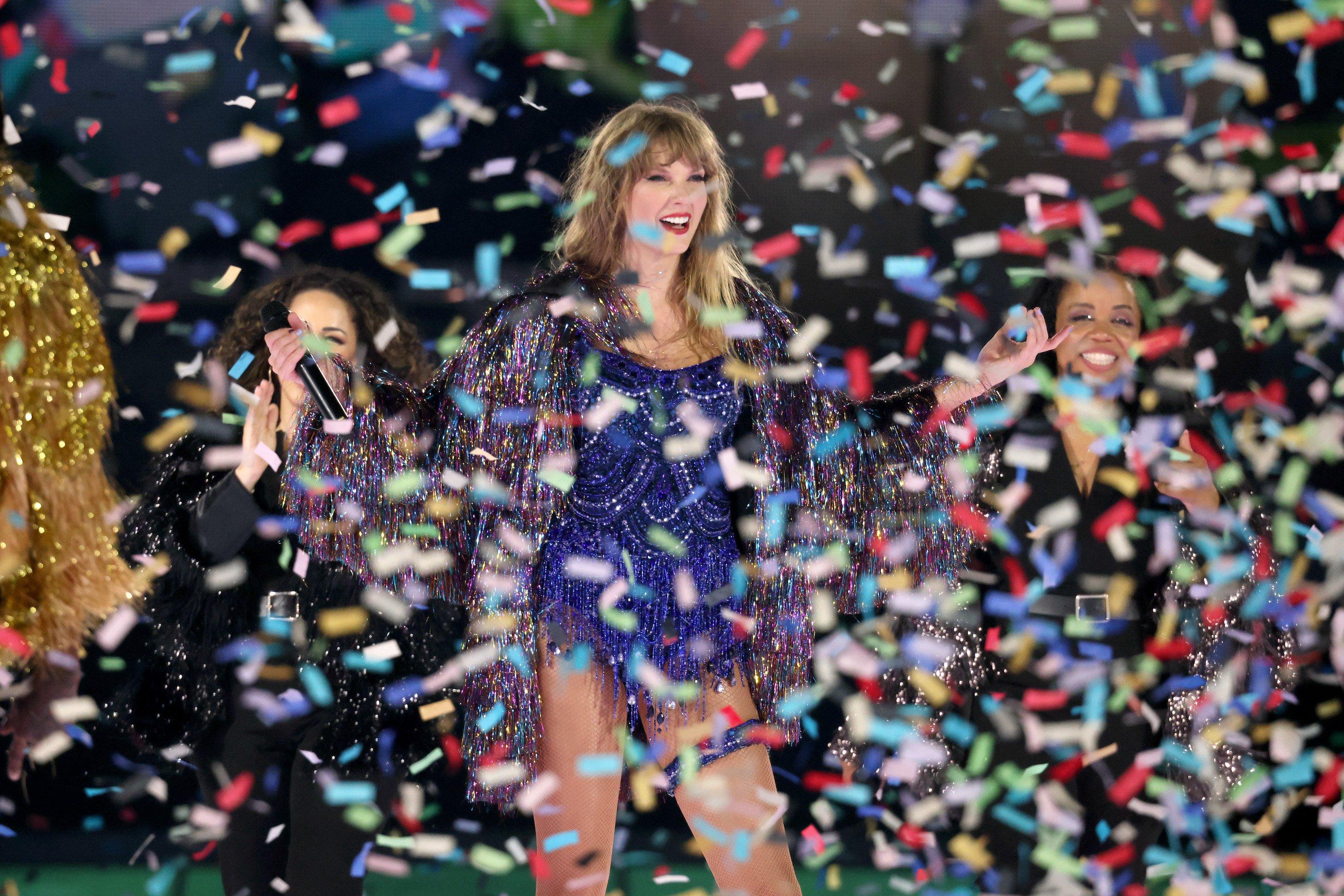
Photo: John Shearer/TAS23/Getty Images for TAS Rights Management
list
New Year's Songs: 16 Tracks To Give You A Fresh Start In 2024, From The Beatles To Taylor Swift
Whether you're looking to vibe with J Balvin or roar with Katy Perry, let these tracks welcome you to a prosperous and hopeful new year.
The beginning of a new year often results in moments of reflection as well as anticipation about what lies ahead. And with the myriad of feelings that ensue upon New Year's Eve, music serves as a powerful source for both introspection and inspiration.
There are countless songs that give listeners a chance to reflect and resonate with the possibilities of what's yet to come. Whether it's the pulsingly hopeful beat of Jamie xx's "I Know There's Gonna Be (Good Times)," the inspiring narrative of The Notorious B.I.G's "Juicy," or Elton John's pumped-up "I'm Still Standing," a good soundtrack is the perfect catalyst for starting a new year on the right note.
As you envision what the coming year has in store, enjoy this playlist from GRAMMY.com — curated not just to celebrate the moment the clock strikes 12, but to infuse the coming year with inspiration and cheer.
79.5 — "B.D.F.Q"
Inspired by singer Kate Mattison's experiences in Detroit, 79,5's "B.D.F.Q." is about perseverance in the face of a music industry marred by misogyny. Short for "B—, Don't F—ing Quit," "B.D.F.Q." amplifies a mood of independence and strength with the declaration, "They! Don't mean a thing/ Don't mean a thing, just do your thing!" While the message is timeless, "B.D.F.Q." will certainly amp you up for any challenges the new year presents.
The Beatles — "Here Comes The Sun"
Whether you spin the 1969 original or the reinvigorated 2019 mix, the Beatles' "Here Comes The Sun," remains a classic symbol of continuation and hope. A track from the Fab Four's iconic Abbey Road album, this George Harrison composition is celebrated for its uplifting melody and serene lyrics that playfully describe a new dawn and brighter days ahead.
Elton John — "I'm Still Standing"
Elton John delivered an upbeat ode to durability and the ability to bounce back with "I'm Still Standing," a 1983 track that resonates 40 years on. Between its catchy melody and John's energetic performance (particularly in the beach-set music video), the song conveys a triumphant message about overcoming challenges and emerging stronger.
"Hamilton" — "My Shot"
Of the many dynamic numbers in Lin-Manuel Miranda's renowned musical "Hamilton," "My Shot" is arguably the most inspirational and universal. A powerfully charged manifesto that embodies ambition and determination — delivered with an electrifying blend of hip-hop and theatrical flair — "My Shot" celebrates seizing opportunities and making a mark. It's a welcome New Year's song choice for those compelled to channel their inner strength and embrace new challenges in the year ahead.
J Balvin — "6 AM" feat. Farruko
This vibrant reggaeton track from J Balvin's 2013 album La Familia encapsulates the spirit of spontaneity. Its infectious beat and catchy lyrics manifest as a celebration of lively nights and the adventures that unfold in the early after hours — hence, the 6 a.m. title. This one's for the night owls, who may see the sun rise at the turn of the new year.
Jamie xx — "I Know There's Gonna Be (Good Times)" feat. Young Thug, Popcaan
"I Know There's Gonna Be (Good Times)" by Jamie xx is as upbeat and optimistic as hip-hop tracks come. Featuring Young Thug and Popcaan, the 2015 track melds elements of dance and reggae for an infectious ode to good times ahead — an enduring NYE sentiment.
Jimmy Chamberlin Complex — "Life Begins Again"
The title track of their 2005 album, "Life Begins Again" is an intricate and evocative composition that blends elements of jazz and rock with a bit of emo sentiment. The track showcases Jimmy Chamberlin's exceptional drumming prowess while promising that life is cyclical — every day can be the first of your life with the right attitude.
John Lennon — "Just Like Starting Over"
With themes of rekindling love and starting anew, John Lennon's "[Just Like] Starting Over" is a fitting tribute to fresh starts and the enduring power of renewal in all aspects of life. And as the final single released while he was alive, it's a bittersweet testament to Lennon's enduring legacy.
Katy Perry — "Roar"
Katy Perry's "Roar," from her 2013 album Prism, is a proud declaration of self-empowerment and finding one's voice. An electrifying track with a booming chorus and spirited lyrics, it embodies the journey from silence to strength. Its message of embracing one's true self and speaking out makes it an inspiring celebration of new beginnings.
Lisa LeBlanc — "Pourquoi faire aujourd'hui"
For those looking to give themselves a little break as the new year begins, Lisa LeBlanc's "Pourquoi faire aujourd'hui" may be the song for you. A single from her 2021 album Chiac Disco, the energetic, disco-inspired French language track features playful lyrics about procrastination, with its titular line asking, "Why do today what you could do tomorrow?" — starting the year off in laid-back fashion. If tu ne parles pas Français, LeBlanc's catchy dance beats are fuel for a joyful New Year's Eve atmosphere.
Lizzo — "Good As Hell"
Like many of Lizzo's songs, "Good as Hell" captures a vibrant, empowering spirit. It celebrates self-care and resilience in the face of adversity, blending a lively rhythm with Lizzo's dynamic vocals. Its uplifting lyrics and infectious energy encourage a sense of confidence and self-appreciation — a powerful anthem of positivity any time of the year.
Nina Simone — "Feeling Good"
A timeless classic first made famous by Nina Simone, "Feeling Good" is a powerful anthem of rejuvenation and hope. Simone's jazz-infused rendition was released in 1965; its resolute delivery captures a spirit of personal transformation and empowerment, offering an enduring sentiment going into the new year: "It's a new dawn/ It's a new day/ It's a new life for me, ooh/ And I'm feeling good."
Notorious B.I.G. — "Juicy"
Although The Notorious B.I.G.'s "Juicy" is a personal account of the late rapper's rise to the top, the song encapsulates a spirit of triumph that can inspire anyone with a dream. From its bouncy beat to the iconic "If you don't know, now you know" hook, "Juicy" will have you reaching for the stars.
Otis Redding & Carla Thomas — "New Year's Resolution"
Memphis legends Otis Redding and Carla Thomas' aptly titled 1967 album King & Queen is notable for being the final studio release before Redding passed away that December. The album also spawned a NYE classic: "New Year's Resolution." With lyrics that explore the concept of making resolutions and embracing change in the new year. While the song lacks Redding's trademark soulful wail, "New Year's Resolution" is temperate and contemplative — a reprieve from the let-it-all-out powerful Stax sound to ease your way into the new year.
Peter Cat Recording Co. — "Portrait of a Time"
Both modern and nostalgic, Peter Cat Recording Co.'s "Portrait of a Time" blends jazz, and indie rock for an eclectic and nostalgic, introspective jam. The song carries a reflective mood of contemplation and transition, with lyrics that encourage leaving "confusion and darkening clouds" in the past and hopping in the Lamborghini of life for a new wild ride.
Taylor Swift — "New Year's Day"
After all of the bold, empowered statements on Taylor Swift's 2017 album reputation, she closes the LP with a tender, piano-driven ballad that captures the quiet intimacy and hopeful sentiments of a new year. Aptly titled "New Year's Day," the song's reflective and heartfelt lyrics contemplate love and loyalty found in life's fleeting moments. Swift's delicate vocal delivery and the track's gentle melody evoke a sense of warmth and enduring connection, making it a poignant choice to embrace the new year with a sense of closeness.
